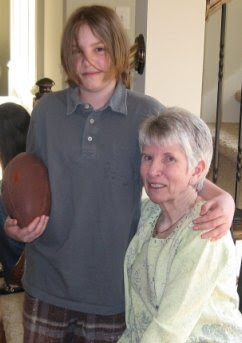In 1900, a 44-year-old L. Frank Baum published The Wonderful Wizard of Oz and became the father of the American fairy tale. The book was a commercial and critical success. The story of the orphaned Dorothy Gale, whisked by a tornado away from gray, impoverished Kansas to the magical land of Oz, captured the hearts of children and adults who had lived through an economic crisis but saw all around them the thrum of invention and change. As a young country abuzz with "progress," the United States needed a different kind of fairy tale. A truly American myth could not merely invoke Celtic wraiths or Bavarian dark forest goblins. It would have to include the drive to innovate that launched the Gilded Age and made America the archetypal modern industrial nation during the very decades when Baum's imagination was formed.
Two new biographies, Evan I. Schwartz's Finding Oz and Rebecca Loncraine's The Real Wizard of Oz—released in conjunction with the 70th anniversary of the iconic MGM film—show that Baum was uniquely suited for this task. He was poised at the crossroads of his era—swept up in burgeoning feminism, the acceleration of new technologies, and the rise of huckster salesmanship. Born in 1856, he grew up in the bustling canal town of Syracuse, N.Y., after his father made money in the oil fields. A dreamy, sickly child, Baum devoured the Brothers Grimm and Hans Christian Andersen. He told his sisters he would write "a great novel that should bring me fame."
But he also reveled in newfangled inventions like the printing press (which, as a teenager, he used to put out a literary journal) and, later, bicycles, Model Ts, and movies. As a young man, he opened a bazaar, sold china door-to-door, helped manage his father's company, and edited The Show Window, a trade journal instructing storeowners in the art of luring customers with "window dressing." The Baum family home, an idyllic spot known as "Rose Lawn," was bounded by a plank road that led merchants to the Erie Canal.* In Baum's formative years, both biographers remind us, the author would have heard much debate about the rise of robber barons (Carnegie, Mellon, Rockefeller), Reconstruction, the new energies of spiritualists, and the Manifest Destiny by which the U.S. Army justified its genocidal attitudes toward many remaining Native American tribes.
The Wonderful Wizard of Oz is a traditional fairy tale to which Baum added a peculiarly American twist: the humbug. In addition to the usual talking animals, evil witches, scary forest, and challenges to be overcome, Oz has at its core a fraud. The Wizard is not a real wizard, but a lost American balloonist who uses stage tricks—hanging a disembodied head by a wire, for example—to fool people into thinking he is powerful. Deploying spectacle to impress his guests, he sends Dorothy and her companions to kill the Wicked Witch of the West (who has real magic powers). When they return, successful, they discover the truth: Toto, scared by Oz's roar, tips over a screen the Wizard hides behind. There stands "a little old man, with a bald head and a wrinkled face." He pleads, "… don't strike me—please don't. … I'll do anything you want me to. … I'm just a common man." "You're more than that," retorts the Scarecrow. "You're a humbug."
Soon enough, the Wizard recovers from his mortification; he is proud to show off how he duped his guests. "Barnum was right when he declared that the American people love to be deceived," Baum once wrote of one of his heroes. Strikingly, even after the Wizard reveals his con, the Lion, the Tin Man, and the Scarecrow still ask for his aid. Like the quack he is, he obliges, stuffing the Scarecrow's head with pins. The Wizard, you might say, is America's first celebrity guru: an ur-Dr. Phil, using charisma and a screen to project authority and wisdom he doesn't truly have.
If Oz and its sequels are shaped by Baum's sharp eye for the theater of commerce, they are also shaped by his wishful revisions of social conflict. Notably, The Wonderful Wizard of Oz offered a paean to strong women at a moment when suffragettes were agitating for the vote. The book's hero-protagonist, obviously, is a girl. In Kansas, her lively laugh repeatedly startles her worn-down aunt. In Oz, she effortlessly (and intuitively) kills the evil witches subjugating the natives. Indeed, all of Oz's strongest figures are women—Glinda, the Good Witch of the South; the Good Witch of the North (not in the film); and the two Wicked Witches.
Baum, who publicly supported women's right to vote, was deeply affected by his beloved, spirited wife, Maud, and her mother, Matilda, an eminent feminist who collaborated with Susan B. Anthony and publicized the idea that many "witches" were really freethinking women ahead of their time. In Oz, Baum offers a similarly corrective vision: When Dorothy first meets a witch, the Witch of the North, she says, "I thought all witches were wicked." "Oh, no, that is a great mistake," replies the Witch of the North. In sequels, Oz's true ruler is discovered; it turns out to be a girl named Ozma, who spent her youth under a spell—one that turned her into a hapless boy. One can imagine Baum winking on the page at his wife and mother-in-law. In his own life, Maud was the strong, practical one who kept things running. By comparison, he must have seemed the feckless humbug, trying one endeavor after another before succeeding as an author.
Or so Baum at times viewed himself, his biographers suggest. His career—he began as a salesman of the family axle oil ("so smooth it will make your horse talk," he would say) and ended broke—indeed lacked a steady literary trajectory. But he was not a mere hack, though he wrote scores of schlocky books for children under pseudonyms to make money. At his core, Baum was an impresario of illusion, fascinated by the allure of utopian possibility, however implausible. Often read as a political allegory about the move away from the gold standard (you can learn more about that interpretation here), The Wonderful Wizard of Oz is more broadly a portrait of a country America promised to be but never became. The book and its sequels offer a recuperative vision, born of intense hopes and disappointments that did not add up in life. And if the tensions show through, that is part of the works' power.
Thus in Oz, different races (the Munchkins in the North, the Winkies in the West, and the Quadlings in the South) mingle democratically, and war is the ultimate ill. In one way, Baum was writing here against himself and demonstrating his own deep ambivalences. While he lived in the Dakota Territory, shortly before the Battle of Wounded Knee, he published two militant editorials calling for the extermination of the remaining Sioux on the grounds that the men of the tribe had lost their authentic strength, becoming little more than "whining curs." Here is the flip side, perhaps, of his dreams of female power—a profound sense of disappointment in male potential, not just among tribal warriors. For Baum, the lure of progress was similarly double-edged. "There's no place like home," a feel-good refrain in the movie, is a far more complex statement in the book. On the one hand, the old familiar world seems better to Dorothy than this bright new one (to the bafflement of the Scarecrow, who attributes his confusion to his lack of brains). On the other, Oz is clearly the more beneficent land, and later in the series Dorothy and her family end up living there. For friends they have companions like the Tin Man, a woodsman who has replaced his flesh limbs with metal ones—at once a chilling and a curative vision in an era haunted by amputated Civil War veterans. Baum, like many of his peers, was at once enthralled and unnerved by mechanization.
After the publication of The Wonderful Wizard of Oz, it looked as though Baum were on track to a fairy-tale ending himself, as a wizard supplying just the fantasies Americans wanted. He helped fashion a popular musical based on the play. Later, he moved to Hollywood and started a film production company, exploring, ahead of his time, the possibilities of special effects. But in the end, Baum's profligacy and grand movie ambitions ruined him financially. He ended up a cautionary figure for an era of speculative overreaching, and a victim of overwork—a man, in other words, for our own economic season. Eventually, Baum sold the copyright to The Wonderful Wizard and died of exhaustion in 1919, 20 years before the MGM film was made. It seems fitting, in retrospect, that while in Baum's book Oz is a real place, in the film it is just a dream. Fairy tales, after all, are not reality.
Source: Slate.com
Meghan O'Rourke is Slate's culture critic and the author of Halflife, a collection of poetry.
Illustration by Charlie Powell. 













































